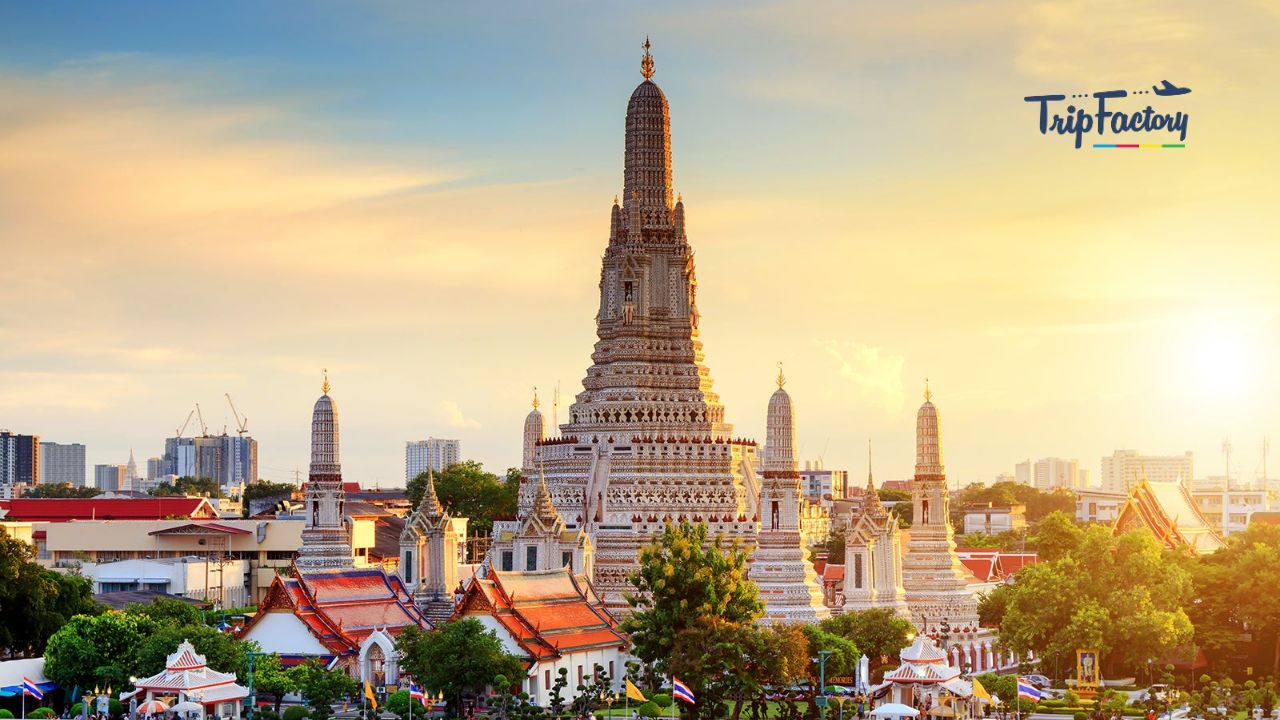Wat Arun Ratchawararam, commonly known as Wat Arun or the Temple of Dawn, is one of Bangkok’s most iconic landmarks. Nestled on the western bank of the Chao Phraya River, this stunning temple is an architectural marvel and a sacred religious site with a history that dates back to the Ayutthaya Kingdom (1351–1767 AD).
The temple is named after Aruna, the Hindu god of dawn, and its central prang (spire) is one of the most recognizable structures in Thailand.
Table of Contents
Historical Significance
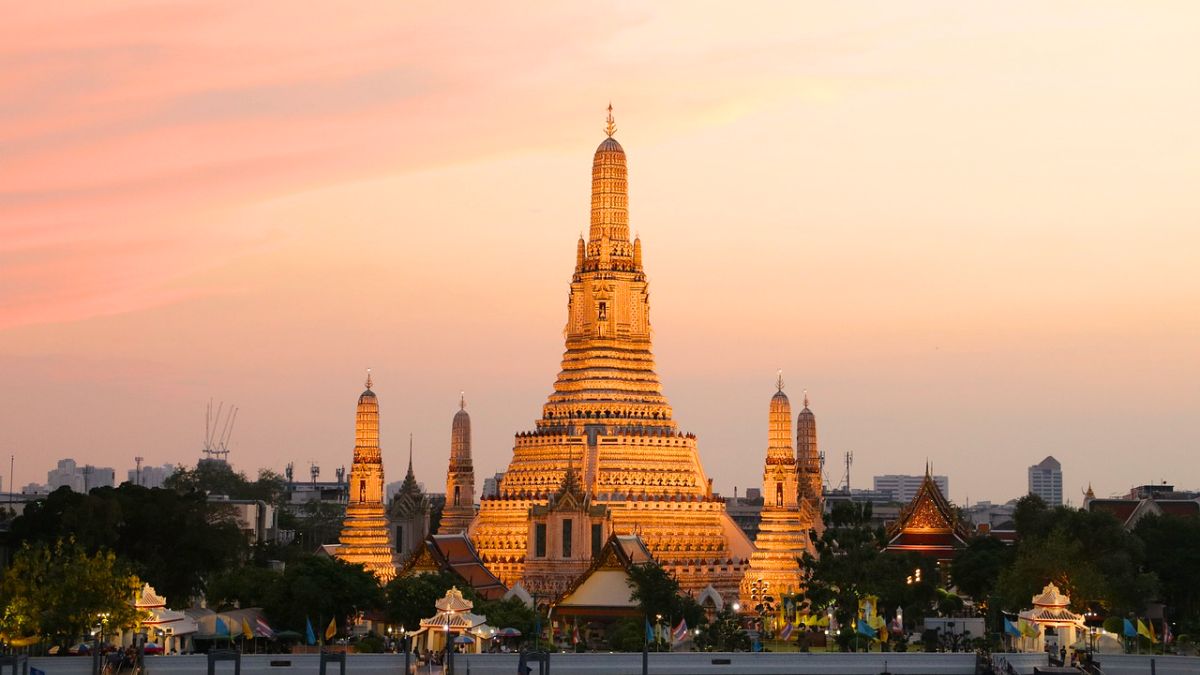
The origins of Wat Arun trace back to the 16th century, when it was known as Wat Makok. The temple gained historical prominence when King Taksin (1734–1782 AD) stumbled upon it at dawn after the fall of Ayutthaya.
Taking this as a divine sign, he designated the temple as the royal chapel and home for the Emerald Buddha, one of Thailand’s most sacred religious icons. However, the Emerald Buddha was later moved to Wat Phra Kaew inside the Grand Palace in 1785 under the reign of King Rama I.
The towering central prang was built during the reigns of Rama II (1809–1824 AD) and Rama III (1824–1851 AD), symbolizing Mount Meru, the center of the universe in Hindu cosmology. The temple underwent significant restoration from 2013 to 2017, ensuring its original beauty was preserved.
Also Read: Siam Amazing Park
Architectural Splendor of Wat Arun
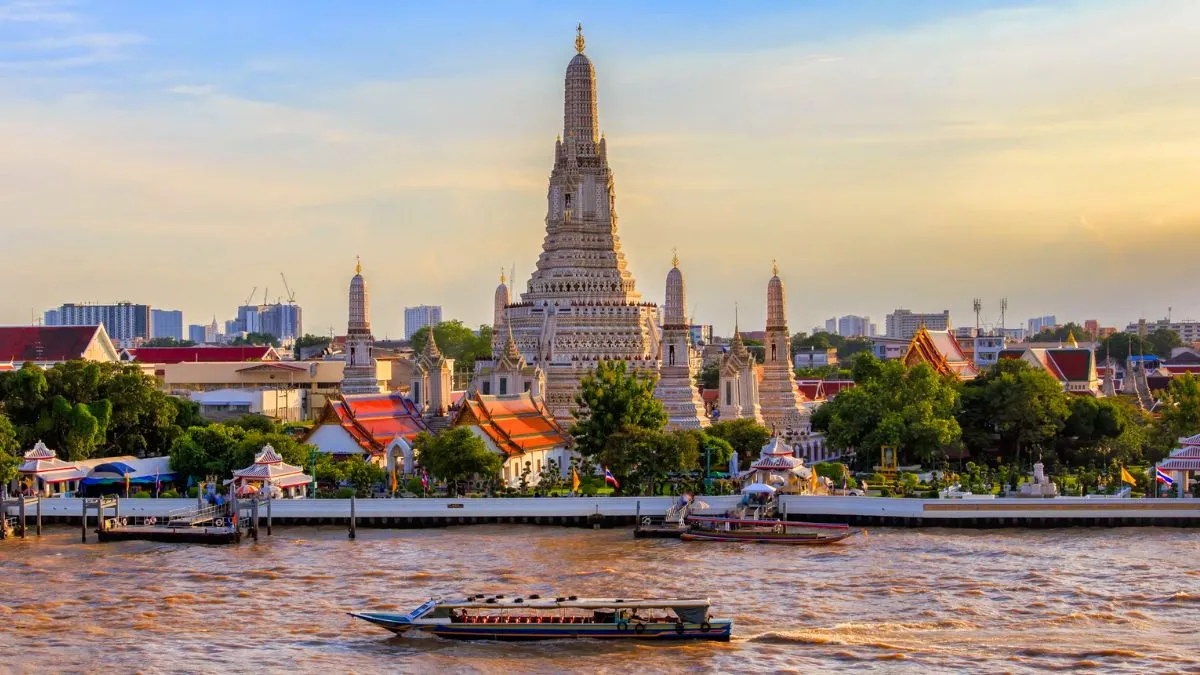
Unlike other traditional Thai temples, Wat Arun stands out with its Khmer inspired central prang, which is estimated to be between 66.8 to 86 meters high.
The entire structure is adorned with intricate floral mosaics made from colorful porcelain, seashells, and fragments of Chinese ceramics, which were once used as ballast in trading ships from China. These elements create a shimmering effect, particularly at sunrise and sunset.
The Central Prang and Surrounding Towers
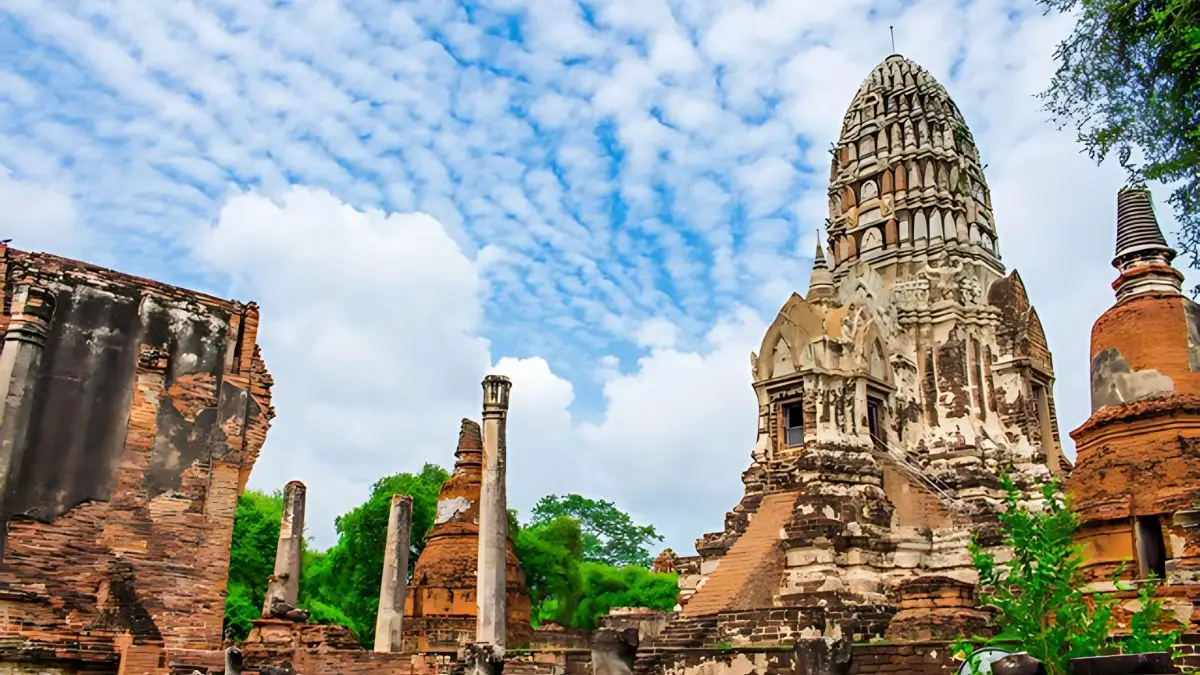
The central prang is flanked by four smaller prangs, each dedicated to Phra Phai, the Thai god of wind. At the base of the central tower, visitors will find ancient Chinese soldier statues and mythological creatures. The highest point of the prang is crowned with a seven-pronged trident, known as the Trident of Shiva.
At the second level of the tower, four statues of the Hindu god Indra can be seen riding Erawan, a legendary three-headed elephant. These artistic elements showcase the fusion of Buddhist and Hindu cosmology in Thai temple design.
Ordination Hall (Ubosot)
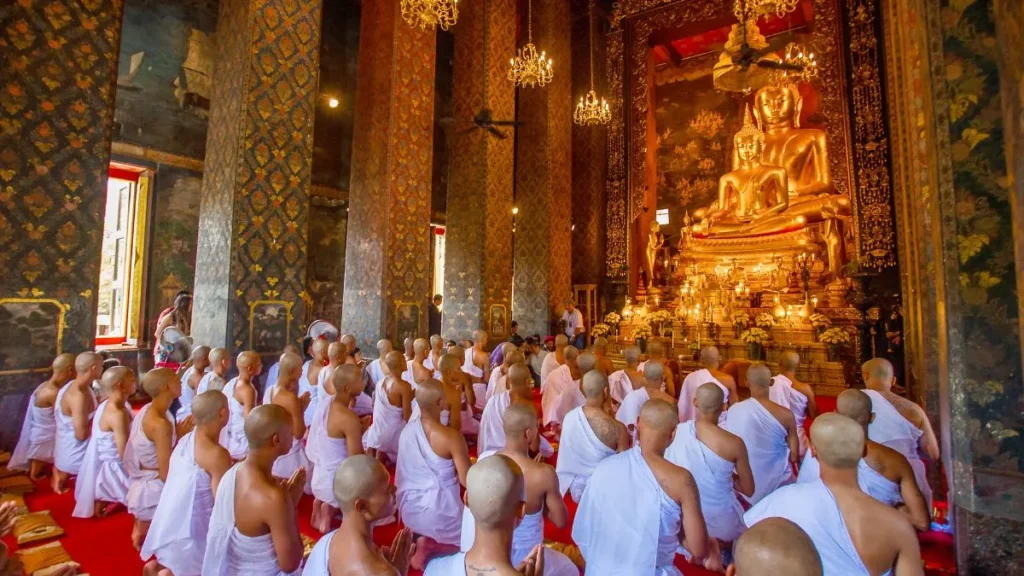
The Ordination Hall is another significant part of Wat Arun. It houses the Niramitr Buddha image, which was designed by King Rama II himself. The entrance is guarded by two imposing Yaksha (giant guardian figures), dressed in elaborate warrior attire.
Inside, visitors can admire intricate stucco work, detailed murals depicting the life of Lord Buddha, and the ashes of King Rama II, which are interred at the base of the Buddha image.
Buddhist Symbolism in the Design
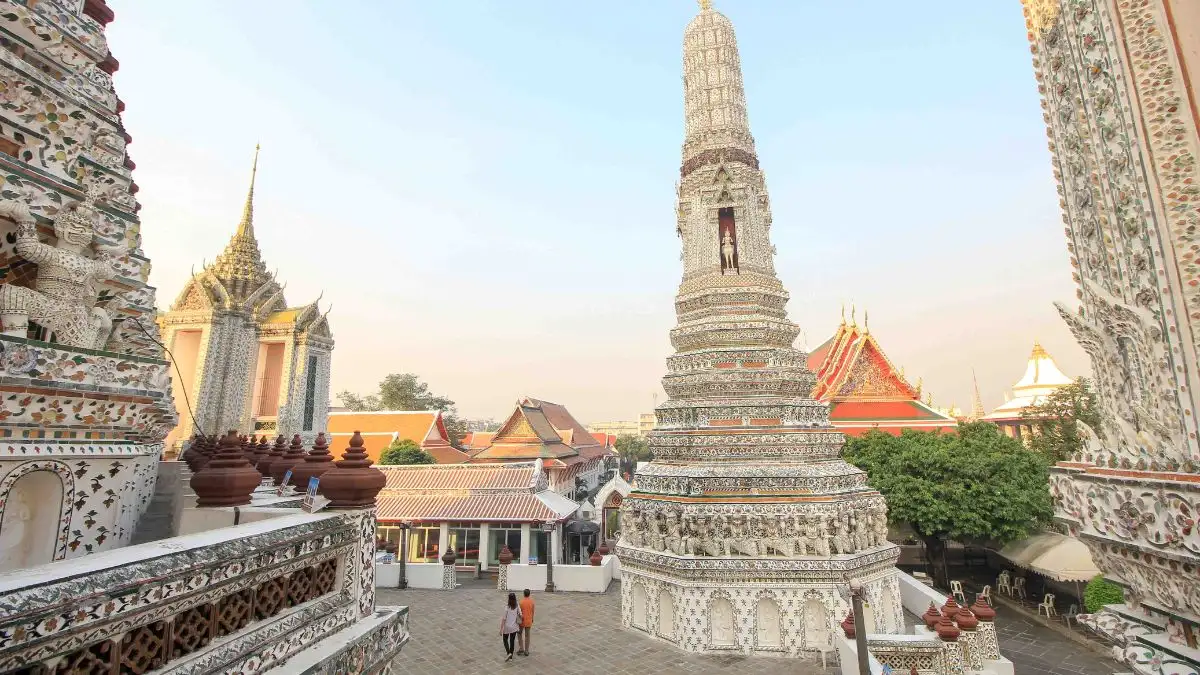
The architectural layout of Wat Arun is deeply rooted in Buddhist and Hindu cosmology. The temple is divided into three symbolic levels:
- Base (Traiphum) – Represents the three realms of existence: the human world, the underworld, and heaven.
- Middle (Tavatimsa) – Symbolizes the realm where all desires are fulfilled.
- Top (Devaphum) – Represents the celestial heavens.
The temple’s entire structure is a visual representation of the path to enlightenment in Buddhist philosophy.
Why Wat Arun is a Must-Visit Landmark
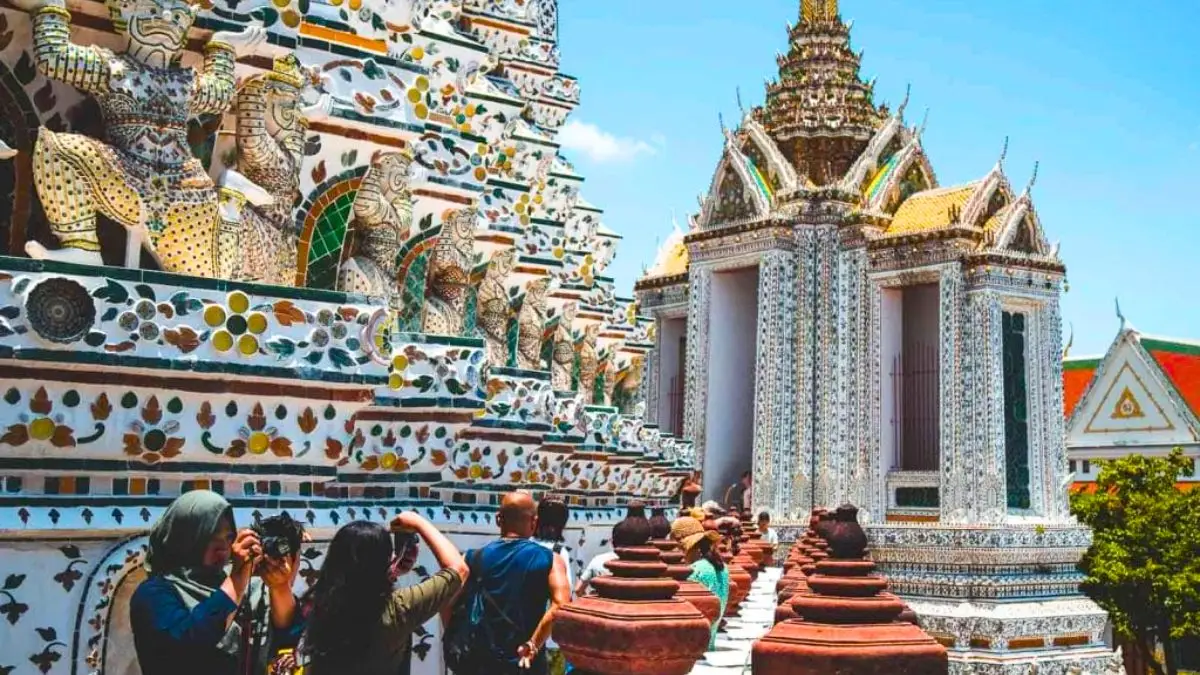
Spectacular Views from the Central Prang
One of the unique features of Wat Arun is that visitors can climb its steep staircase to reach the upper levels of the prang. From here, they can enjoy breathtaking panoramic views of Bangkok, the Chao Phraya River, and famous landmarks such as Wat Pho and the Grand Palace.
Sunrise and Sunset Beauty
While the temple is called the Temple of Dawn, it is equally mesmerizing at sunset when the golden light reflects on its surface. The temple illuminates beautifully at night, making it a stunning sight from across the river.
The Unique Porcelain Decoration
Unlike most Thai temples, which feature gold-plated stupas, Wat Arun’s entire exterior is decorated with broken porcelain pieces, giving it an iridescent quality. These porcelain fragments were originally discarded by Chinese trading ships and later repurposed to adorn the temple.
Also Read: Siam Ocean World
Practical Information for Visitors
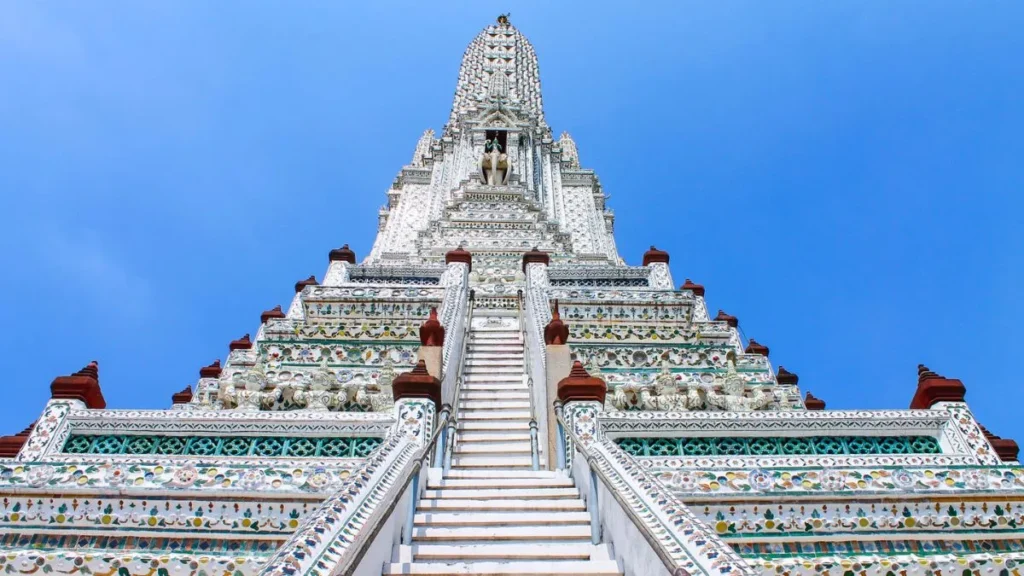
Opening Hours & Entrance Fees
- Opening Hours: 08:00 AM – 06:00 PM daily
- Entrance Fee: 200 Baht for adults, free for small children
How to Get There
- By Boat: Take the Chao Phraya Express Boat to Tha Tien Pier, then take a short cross-river ferry.
- By Taxi/Tuk-Tuk: Easily accessible from most parts of Bangkok.
Dress Code & Temple Etiquette
Since Wat Arun is an active Buddhist temple, visitors must dress modestly:
| Guidelines | Details |
|---|---|
| Do Wear | Long trousers, skirts, or dresses covering the knees and shoulders. |
| Avoid Wearing | Shorts, sleeveless tops, and tight clothing. |
| Clothing Rental | Sarongs are available for rent at the entrance if needed. |
| Respectful Behavior | Speak softly, remove shoes before entering sacred areas, and avoid touching religious statues. |
Nearby Attractions & Dining
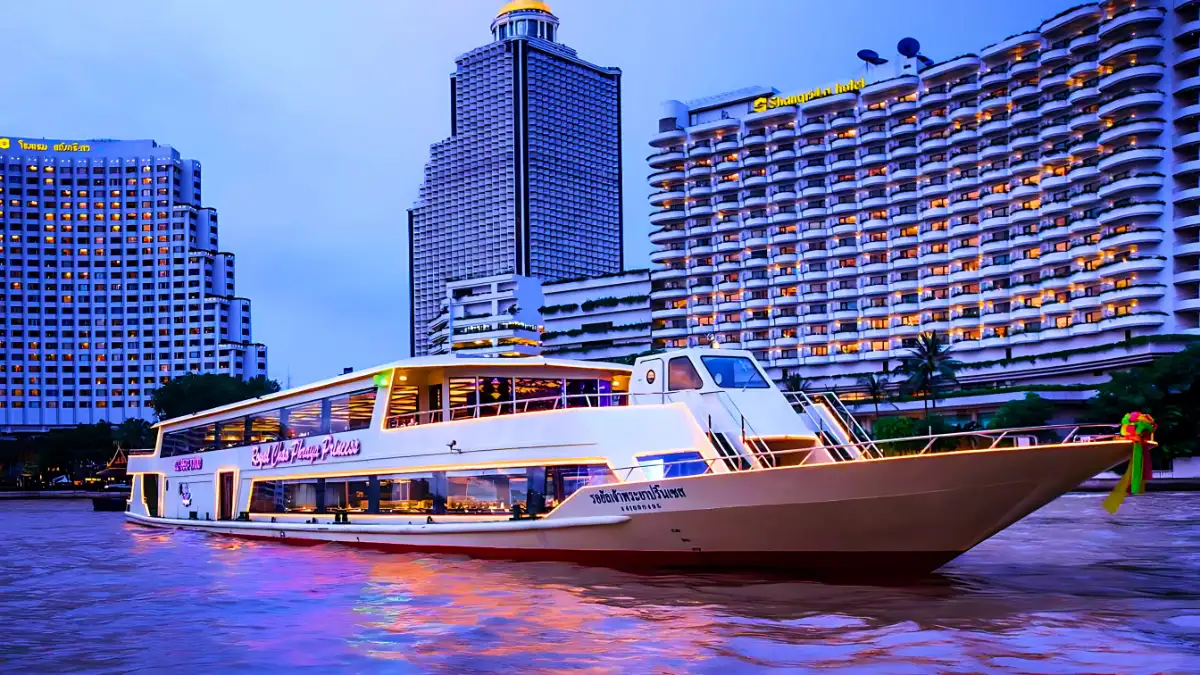
- Wat Pho (Temple of the Reclining Buddha) – Located across the river, home to the 46-meter-long Reclining Buddha.
- The Grand Palace & Wat Phra Kaew – Just a short boat ride away, housing the Emerald Buddha.
- Chao Phraya River Cruises – Enjoy a scenic sunset cruise along the river.
- Nearby Restaurants: Try local Thai delicacies at Tonkin Annam (Vietnamese cuisine) or enjoy a rooftop view from Amorosa Bar.
Best Time to Visit & Photography Tips
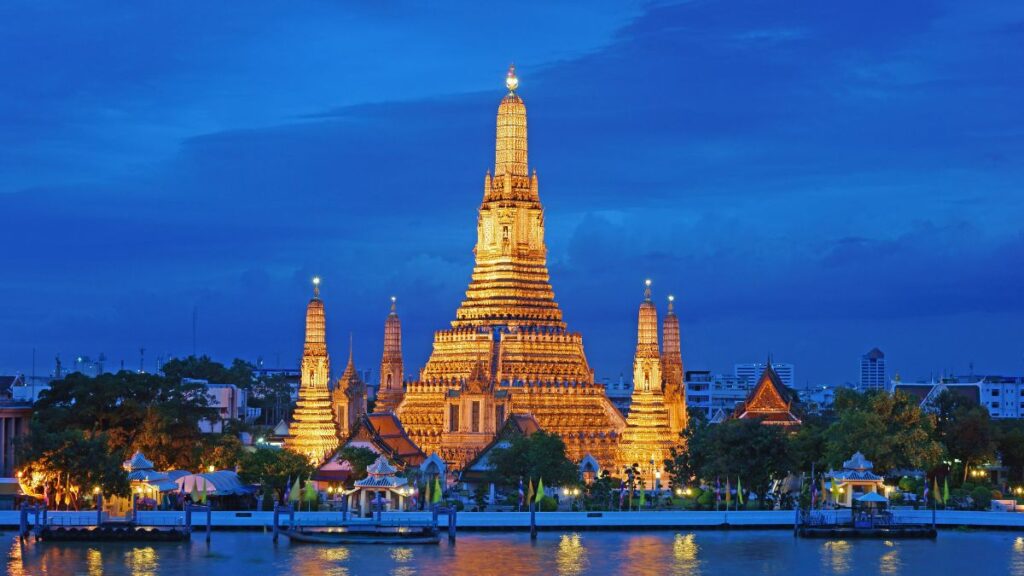
The best time to visit Wat Arun is early morning when there are fewer crowds or late afternoon when the sun casts a golden glow over the temple. For photography enthusiasts, capturing Wat Arun at sunset from across the river provides one of the most stunning images of Bangkok.
Conclusion
Wat Arun Ratchawararam is not just a temple; it is a historical, cultural, and architectural masterpiece that embodies Thailand’s rich heritage. Whether you visit at dawn, during the day, or at sunset, this temple promises an unforgettable experience. From its steep staircases leading to panoramic views, to its intricately designed porcelain mosaics, every aspect of Wat Arun tells a story of Thai history, art, and spirituality.
If you are planning a trip to Bangkok, Wat Arun should be at the top of your must-visit list. Its unique blend of Buddhist and Hindu traditions, combined with breathtaking architecture, makes it one of the most captivating and sacred sites in Thailand.
Also Read: The Royal Grand Palace
Frequently Asked Questions
What is Wat Arun?
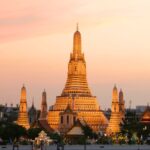
Wat Arun, also known as the Temple of Dawn, is a famous Buddhist temple in Bangkok, Thailand. It is known for its stunning riverside location and unique Khmer-style prang (tower) decorated with colorful porcelain.
Where is Wat Arun located?
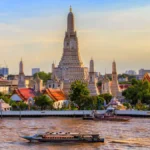
Wat Arun is located on the western bank of the Chao Phraya River in Bangkok, directly opposite Wat Pho and the Grand Palace.
Why is Wat Arun famous?
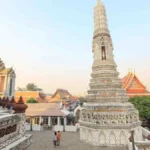
Wat Arun is famous for its iconic central prang, which is beautifully illuminated at night, and for offering stunning sunrise and sunset views over the river.
What are the opening hours of Wat Arun?
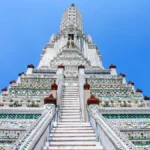
Wat Arun is open daily from 8:00 AM to 6:00 PM.
What is the entrance fee for Wat Arun?
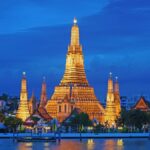
The entrance fee for foreign visitors is 100 THB per person. Thai nationals can enter for free.

